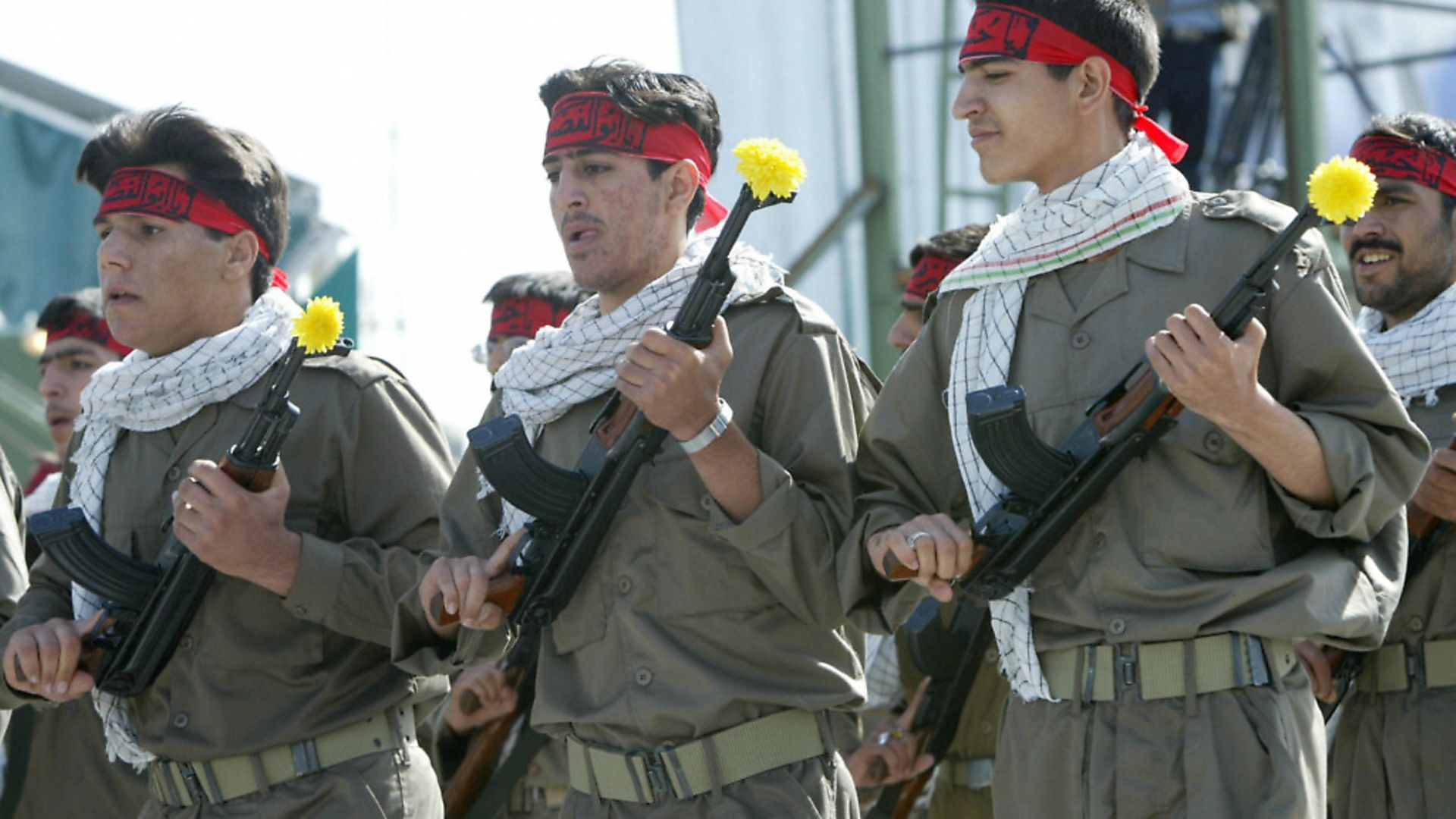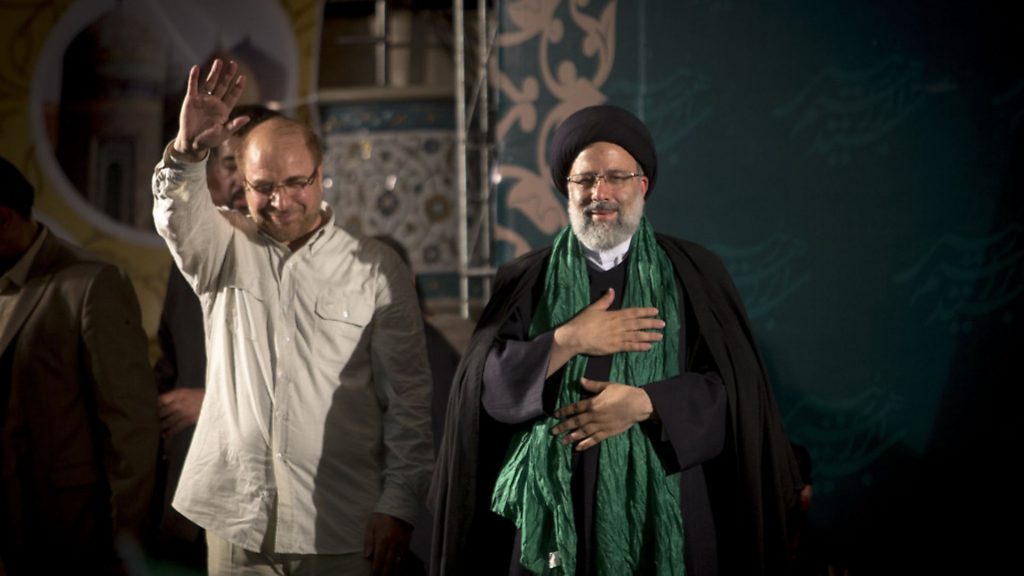
It might be tempting to revel in the tribulations of Tehran’s unpleasant rulers. But, it’s worth being careful what you wish for.

The Iranian regime is in trouble. Trade sanctions, a failing economy and many citizens’ frustration with curbs on their freedom are undermining its grip on power. But prompting the weakening or collapse of Iran’s ‘Islamic Republic’ system would not necessarily be a good outcome for its people or opponents in the Arab world and the West.
The 2015 nuclear deal authorised the lifting of most of the international sanctions that had severely handicapped the Iranian economy for many years. Slow implementation meant the country had barely begun to recover from their effects when Donald Trump decided in May to rip up the nuclear agreement and re-impose harsh US sanctions.
This decision sent the Iranian economy into a renewed tailspin. Inflation and unemployment are rising sharply and the currency, the rial, has lost more than half its value.
Iran’s vulnerability to external pressures is exacerbated by internal failings such as corruption, inefficient management and the market dominance of companies run by regime bodies, particularly the Islamic Revolutionary Guard Corps.
The severe economic difficulties many Iranians are facing are coupled with their frustrations at the regime’s restrictions on their personal and political freedoms. Whilst the system features elements of democracy, including an elected president and parliament, these institutions are subordinate to a hard-line religious and security forces’ establishment. Mass demonstrations have become a regular feature of the Iranian political landscape over recent years. As have the repressive methods used to put them down.
Ostensibly, there would be little reason for most outsiders to mourn the fall of the Islamic Republic. It is a serial human rights abuser, a supporter of violent, international extremist movements and a major contributor to instability in the Middle East through its interference in countries such as Lebanon and Iraq. Working in tandem with Russia, Iran has ensured the survival of the repellent Assad regime in Syria.
But the huge lesson of recent decades is that the world – and especially the Middle East – is a complicated place. The fall of a troublesome regime does not automatically mean that what follows will be better.
In Iran’s case, the short-term risk is that the pressure will destroy the relatively moderate and reformist government of president Hassan Rouhani, rather than the Islamic Republic system as whole, and hand full control to the hardliners.
Rouhani staked his presidency on agreeing a nuclear deal with the international community in return for the lifting of sanctions. The reformers argued that this prize would enable them to rebuild the economy and directly benefit the Iranian people.
In contrast, Iran’s hardliners accused the reformers of naivety because the West, particularly America, was unreliable. Their view was that the nuclear deal required Iran to surrender its security interests in exchange for supposed economic benefits that would never materialise.
By ripping up the agreement and re-imposing sanctions, Trump has proved the hardliners right. Supreme leader Ayatollah Ali Khamenei says Trump’s decision is ‘clear proof that America cannot be trusted’.
Rouhani is already reining in his efforts to reduce the influence of hard-line bastions such as the Revolutionary Guards and courting their support instead. This may not be enough to save his position. Conservative rivals such as the former mayor of Tehran, Mohammad Bagher Ghalibaf, are already on manoeuvres, making fire and brimstone speeches about the need to return to hardcore revolutionary values.
The hardliners gaining complete control of the Islamic Republic would do nothing to solve Iran’s problems, of course. It would simply lead to more repression, more public anger and greater domestic instability with unpredictable consequences. This would only increase the suffering of the regime’s biggest victims, its domestic critics.
Iran’s nuclear weapons programme would likely be restarted, reviving the horrific spectre of a nuclear arms race in a dangerously unstable region. A ramping up of Iran’s malign interference in other countries around the region and support for extremist, anti-Western groups would also ensue.
The longer-term impacts would be damaging too. Historical perspectives are powerfully resonant in Iran. The perceived history of Western meddling in the country is a significant factor in the Islamic Republic regime’s anti-Western stance. Iranians of all political stripes often cite Western security services’ alleged involvement in the 1953 overthrow of the secular, democratically elected government of Mohammed Mossadegh.
The West is also blamed for backing Saddam Hussein’s Iraq during the 1980-88 war with Iran. That brutal conflict impacted many Iranian families, costing more than 200,000 Iranian lives on the battlefield. Many more died subsequently as a result of their injuries or the long-term effects of Saddam’s chemical weapons.
One of the trickiest aspects of the decade-long nuclear deal negotiations was persuading Iran that the West could be trusted to stick to its commitments. The actions of the Trump Administration will now lead to the agreement being seen by many Iranians as yet another act of deception.
The downward spiral of distrust was only accelerated by a terrorist attack last month in Ahvaz, in the south west of the country, on a military parade commemorating the start of the Iran-Iraq conflict. Twenty nine people were killed in the assault, which appears to have been carried out by an extremist, separatist group from the substantial Arab minority in Iran’s Khuzestan region. Supreme leader Khamenei was quick to blame ‘US-backed regimes in the region’ for supporting the ‘plot’. Foreign minister Mohammad Javad Sharif vowed that ‘Iran will respond swiftly and decisively to the regional terror sponsors and their US masters who are accountable for such attacks’.
Whether the Islamic Republic system survives or not, Iran will remain an important power in a crucial area of the world. Further entrenching Iranian mistrust of the West will make maintaining peace and security even more difficult for many decades to come, whatever type of government is in office in Tehran.
Quiet, calculated diplomatic pressure on the current regime to change some of its practices would be the best way improve the lot of the Iranian people for now, rather than prompting massive upheaval.
The potential collapse of an unpleasant regime such as Iran’s may be nothing to shed tears over. But in international relations, it often makes sense to be careful what you wish for.









